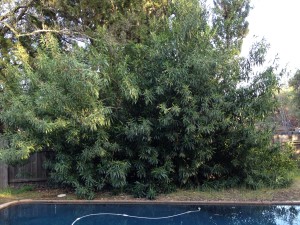Don’t Hedge Your Bets — Trim, Maintain, and Comply
Property owners use hedges for a variety of reasons. Hedges create privacy and barriers to sound. They offer environmentally-conscious alternatives to walls, and may assist with security. Hedges are also attractive, and many homeowners consider them an “all-in-one” solution to several needs.
Unfortunately, improperly maintained hedges also create hazards, which in turn create the potential for liability.
Hedges can cause liability in several ways. Let’s examine a few:
OVERGROWN OR IMPROPERLY-SIZED HEDGES
Many cities and municipalities have “hedge restrictions” regulating maximum heights and minimum (or maximum) setback distances from sidewalks, streets and driveways. Some CC&Rs (private restrictions on property use) also regulate hedges.
Property owners must investigate and comply with all applicable laws and regulations, including CC&Rs. This includes regular trimming to ensure that hedges don’t overgrow adjacent sidewalks, streets or thoroughfares, and also maintenance of proper heights.
Failure to comply with laws and CC&Rs can result in fines, civil actions (lawsuits) and liability if the non-conforming hedge causes or increases personal injury or property damage. Sometimes, the injured party only needs to show that the hedge violated a safety law in order to prove the homeowner violated a duty (and was therefore negligent in taking care of the hedge).
OBSTRUCTED VIEWS – AN ACCIDENT WAITING TO HAPPEN
Many hedges, especially those designed to serve as “privacy hedges” or sound barriers, block vehicle operators’ views of driveways, streets. and sidewalks. This creates a hazard both for vehicles exiting the driveway (which may not see pedestrians on the sidewalk or cars and cyclists approaching along the street) and for automobiles and cyclists in the roadway, who may not see a child, a pet, or even a vehicle leaving the driveway. Dangerous accidents, and even fatalities, often result from obstructed views.
Wherever possible, trim hedges to ensure a safe line of sight for pedestrians, cyclists, and drivers. If necessary, use angled mirrors to enhance drivers’ view of sidewalks and streets. Signs may also provide added warnings. A posted sign reading “hidden driveway” or “Caution: obscured drive” may help lessen (though not eliminate) the possibility of accidents.
POISONOUS AND THORNY HEDGES – A DANGER FOR THE UNWARY
Many popular hedge varieties harbor hidden dangers. Oleander is poisonous to humans and many animals. Pets and children may ingest the leaves or flowers, causing illness or even death. English rambling rose has vicious thorns.
Homeowners are liable for injuries and illnesses caused by plants on their property, even if the homeowner didn’t know the plant was toxic or dangerous to people and pets. Investigate your hedges and take appropriate action to avoid liability from thorns and poisonous species.
TRIM, MAINTAIN, AND COMPLY
Although it’s impossible to guarantee that a hedge will never result in liability, homeowners can mitigate that liability–and damages–by keeping hedges trimmed, maintained, and compliant with local laws and regulations. Regular maintenance can significantly reduce the chance of accidents and injuries, without reducing the attractiveness or functionality of hedges.
Don’t hedge your bets on liability. Trim, maintain and comply.
© 2014 Ross Law















